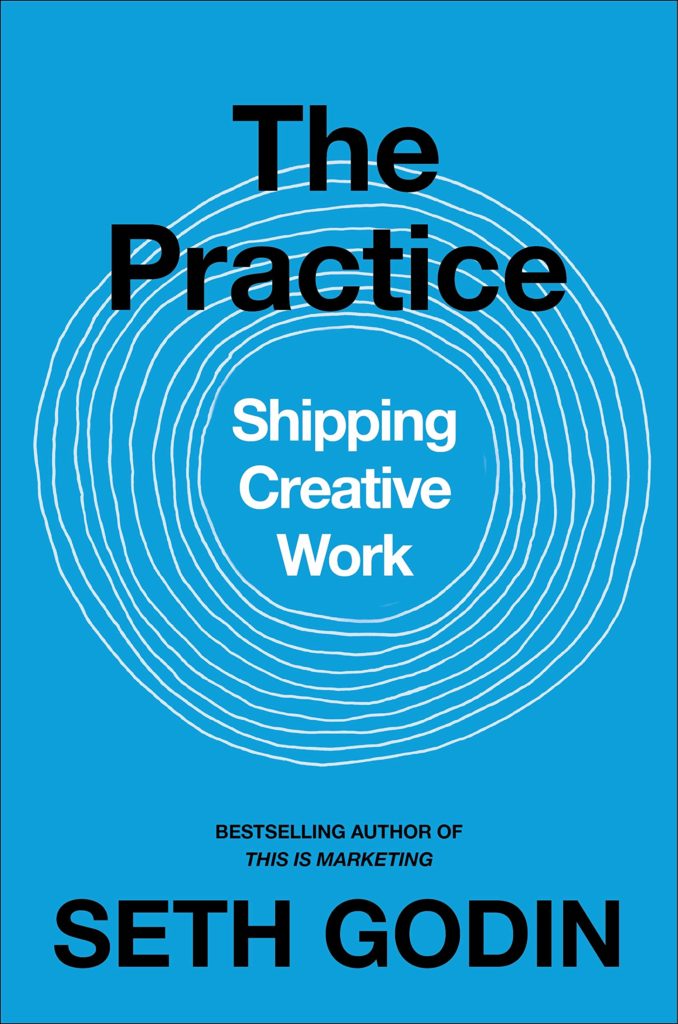
Calling all creative entrepreneurs seeking to grow your trade! The world needs your art to be a better place.
But how do you gear yourself up to ship creative work? Is there a secret formula for entrepreneurs to keep going — even when things don’t turn out well?
The answer lies in The Practice: Shipping Creative Work by one of my favourite marketing mavens Seth Godin. (I’ve written about his books like Meatball Sundae, Purple Cow, The Dip, The Icarus Deception, and many others before.)
At times contrarian and counter-intuitive, The Practice isn’t a manual or a step-by-step guide.
Rather, it seeks to inspire and incite creative entrepreneurs — artists, writers, designers, architects, actors, singers, and yes, entrepreneurs — to adopt a way of life that helps us to “ship creative work.”
One that focuses on the process — and the practice of creating art for a specific audience — without worrying about the outcome.
So what gems of wisdom can be found in Seth’s latest volume?
Trust Your Self
“It is better to follow your own path, however imperfectly, than to follow someone else’s perfectly.” — The Bhagavad-Gita
The first step in being a creator is to trust in yourself. Focus on your own practice of growth and connection and of service to others.
Find a creative hero, and adopt their practice. Don’t wait to be picked. Instead, choose yourself. Be bold and daring.
Love what you rather than do what you love. As an artist, your commitment should be to the process and the practice.
A positive outcome is a by-product — do not obsess over it.
Start wherever you are, and embrace imposter syndrome. According to Seth, the “imposter is proof that we’re innovating, leading, and creating.”
How Making Art Can Be Generous
“Here, I made this.”
As a creative entrepreneur, your goal is to contribute towards making better things.
Be a change-maker — one who leads, who trusts the process and to repeat the practice enough to get unstuck.
Adopt a mindset of abundance, not scarcity. Focus on the few who matter, not everyone.
Choose better clients. Shun nonbelievers.
As Seth has written:
“The work exists to serve someone, to change someone, to make something better. In order to be popular, to reach the masses, we often have to sacrifice the very change we sought to make.”
How Creative Professionals Behave
Being a creative professional means always being on the hook. It means putting in the hours to hone your skill — learned, practiced and hard-won.
Spend your hour on the practice, do it often, and be persistent in serving your audience.
Don’t just be a hack — such a person only focuses on the results or “how much can I get away with?”
Instead, be a professional that walks the fine line between showing up with a generous vision and showing up trying to control the outcome.
Ship creative work on a schedule. Without attachment or reassurance.
The Importance of Intent
Without the right intent, there will be no change. If you care enough about making a change in your field, you need to own the impact of your work.
Intentional action is about designing with purpose. Its about doing something to help someone else — the age old “Who’s it for?” question that you need to ask.
Being specific matters. Seek to reach someone, not everyone.
The second question you need to ask is “What’s it for?”
Aligning “who’s it for” and “what’s it for” helps you to create work that rhymes. After you’ve shipped your work, watch and learn to see how you can improve.
Repeat.
Eliminate Writer’s Block
According to Seth, there is no such thing as writer’s block. To avoid ever hitting a wall, here’s what he suggest you can do:
- Build streaks and do the work. Every single day. Show up daily without fail.
- Talk about your streaks to keep yourself honest and accountable.
- Seek the smallest viable audience for your work.
- Avoid shortcuts. Instead, find the most direct path to reach your end goal.
- Find and embrace a specific genre for your art. Don’t be too generic.
- Seek out a desirable level of difficulty — a level that keeps you on your toes and challenges you, but not overwhelm you.
- Don’t talk about your dreams with people who want to protect you from heartache.
Make the Right Assertions
What is an assertion and why does it matter?
First, an assertion is not a guarantee. It is the foundation of the design and creation process.
However, it helps to direct your work in the right direction — one where you’re seeking to make things better with a “Perhaps…”
To be intentional requires us to think about our assertions:
- What are the possible implications and side effects of your planned action?
- What happens if it works?
- What happens if it don’t — and what are your contingency plans?
How to Earn Your Skills
Apparently, people who spend more hours training don’t necessarily perform at the highest level of performance.
Instead, the two key differences are:
- Skill: The best performers tend to do their strokes differently. These are both learned and practiced skills.
- Attitude: They bring along a different attitude to their training, and find delight in what others avoid.
(Read my article on deliberate practice here.)
Creators have a better attitude and are willing to do the hard and difficult work to do better.
Beyond that, they also look for their cohort — this is why many people congregate to creative cities like New York where creativity flourish.
You should also desire lifelong learning, commit to the practice, and read deeply and widely in your domain.
Constraints are a Boon — Not a Bane
Contrary to popular belief, constraints are actually good for art. These limits provide the creative tension needed to forge great work.
Some of Seth’s favourite constraints? Time. Money. Format. Team members. User trust. Materials. Technology. Regulation. Physics. The status quo.
(And yes, the limits of writing on a blog like this is considered a constraint too!)
Finally, Where Do Ideas Come From?
Apparently, rarely from watching television. At least not for me too!
Ideas may come from reading a good book. They may come from trouble. Or when dissimilar universes collide.
They often creep out of the periphery and when we least expect it. Like when we’re running. Or in the shower. Or allowing our minds to wander.
Conclusion
As you’d imagine, Seth’s books aren’t a systematic step-by-step guide.
Trying to unravel the gems of wisdom contained in each volume will exhaust you. However, one you’ve managed to digest and assimilate them, you’ll find them immensely valuable.
Are you ready to embark on your own practice?

